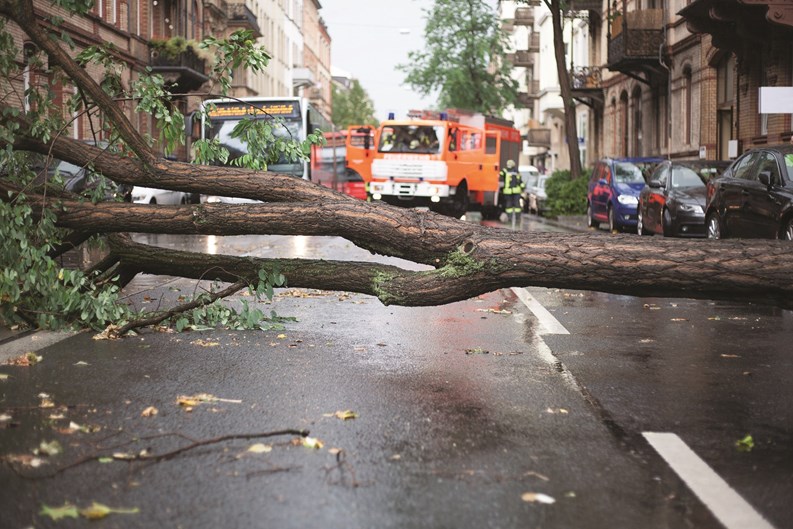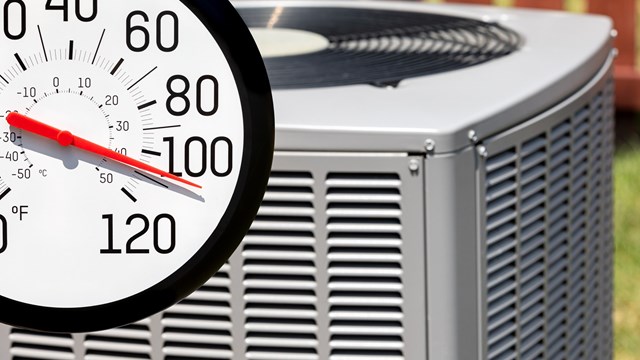Disasters, whether big or small, most often strike from out of the blue. They catch us unawares, flatfooted and feeling helpless at their impact. This is especially true when these disasters hit us at home—or within our shared co-op or condo communities.
When fire, flood, hurricanes or even death occur, residents and neighbors can be left feeling frightened and adrift and look to the board and property management for guidance and help. This is why it is so important for communities and associations to have action plans in place and be prepared as best they can be for the unexpected.
It Happens to Everyone
For residential communities, the most common types of problems fall into two major categories, says Chuck Schneider, CMCA, AMS, president of Lincoln Hancock Restoration LLC and part of Associa. These two categories are “weather-related phenomena and those actions typically caused by humans,” he says. “Weather phenomena are generally larger in scale, such as hurricanes, tornadoes, floods, earthquakes, wild fires and hail or wind storms. Disasters caused by humans are smaller in size and scope and are most commonly water losses, such as a broken water line, or individual unit or building fire.”
Other major disasters can be even smaller in scale but just as devastating. These involve the aftermaths of violent incidents, accidental deaths or the passing of individuals without family or friends who may not be found for days at a time. While these situations may only involve one unit, their impact can be felt by neighboring units or throughout the whole building.
What to Do When Things Get Bad
When disaster strikes, the men and women in charge must prioritize and focus on what matters most: the well-being of their residents. “The safety of the individuals in the building, at the time of the emergency, is always the first and most important priority,” says Schneider. “The first step may entail contacting emergency personnel, such as the police or fire department, if injury or death is a concern. In that case, the community manager should immediately call 9-1-1. After the building is safe and secure, then it is appropriate to focus on the preservation of the property.”
If the worst should occur, says Schneider, “emergency responders have the authority and training to guide you through the initial response. If city or state agencies need to be contacted, the police, medical or fire responders will know which agencies need to be contacted and they will generally contact the appropriate agencies directly.”
“The first thing to do is to remedy the physical property, and to immediately establish effective communication with the owners,” says David Abel, senior manager of First Realty Management Corp. in Boston.
“We recently had a client experience a major flood that seriously damaged common hallways, an elevator, stairwell, garage and 20-some units. We had to quickly coordinate with town officials—first and foremost of which was the fire department — to determine what had to be done to ensure the safety of the undamaged part of the building and the residents therein. We had a reputable mitigation firm on the premises in less than an hour.”
Finding the right company to make the necessary repairs falls under the duties of the management and board. “It is always the responsibility of the insured to select the contractor to complete the repairs,” says Schneider. “While most insurance companies will offer names of contractors to complete the work, it is not advisable to select those contractors. The best course of action is to follow the advice of your management company. Your management company will have strong relationships with vendors who have proven track records of delivering quality service.”
As with most things in life, preparation paves the way for better outcomes. Andrew Yurchuck, president of the American Bio-Recovery Association, suggests that associations and boards need to come up with a plan long before disaster or biological clean-ups are ever needed. “What if there’s a flood, fire, crime scene or someone passes away unexpectedly—you need to have a company in mind to take care of these things,” Yurchuck says. Especially when there is loss of life, “you want to act quickly. There’s a responsibility to the other people in proximity” to the event.
Abel agrees. “It is extremely important to maintain an up-to-date emergency protocol, so that management can respond quickly and efficiently. Said protocol should effectively coordinate remediation and repair, as well as communication to owners.”
Yurchuck also underscores the importance of being prepared for the legal ramifications of a death on the premises, especially in an instance involving the loss of someone who may have lived alone or is without close next of kin. “Let’s say you have to go in and clean up [after a death],” he says. “The association has to be very careful going in to authorize the clean-up. Maybe someone passed away on a couch in their unit, for example. That couch has to be disposed of, but then the next of kin protests and says ‘you threw out our sofa.’ You have to coordinate with your legal department to stay out of trouble.”
“There are several legal concerns that may be relevant in certain loss of life situations, adds Schneider. The best plan of action is to quickly seek the guidance of an experienced and reputable attorney before taking any action.”
Cleaning Up and Making Whole Again
Setting things right after a disaster or emergency situation will go more smoothly if everyone knows their roles. “We are the point people/entities in the event of any disaster,” says Abel. “We coordinate all facets of the aftermath, from ensuring remediation vendors arrive, to owner communication to municipal interaction to the long process of dealing with a public adjuster, the insurance carrier's adjuster, architects and engineers to design renovation specifications, etc.”
Clear and open communication also will facilitate a healthy, positive and full recovery for the community.
Cleaning up after disasters such as fire and water issues can be extensive and should be handled by a team of professionals. Following a fire, Schneider says, the first step “is to secure the affected area” by boarding up the site. After fire officials complete their investigation, the building will be released and restoration can begin. This process usually starts with demolition and the removal of contents damaged by smoke, fire and water. “It is not uncommon for smoke to cause more damage than the fire itself,” Schneider says. “What appears to be a small, contained fire can often result in a significant amount of smoke damage well beyond the area of the fire.”
For situations involving wind and storms, roofs often sustain the greatest damage. When that occurs, the first step is usually to “conduct temporary repairs to ensure that water intrusion does not occur,” says Schneider. “After the temporary repairs are conducted, it is appropriate to file an insurance claim. Through the insurance claim process, it will be determined if your roof requires full replacement or only partial replacement. Evaluating wind damage to a roof is a scientific process and commonly involves engineers with specialized expertise in evaluating wind damage to buildings. It is important that your roofing contractor have a strong background in navigating wind claims as well as relationships with engineers that can help evaluate your roof.”
In the rare instances when violent crime, suicide or accidental death brings tragedy to a community, cleaning up the scene requires highly specialized contractors, and management needs to make sure that the right firms are on call should the need arise.
“You need to really establish that your company has specific environmental insurance,” says Yurchuck. “There are companies that advertise but are not certified. You need to check their credentials and check their insurance. A janitorial company can clean but may not do so properly.” And the improper cleaning of a bio-hazardous situation can have significant ramifications, including the possibility of a future resident getting ill.
Fortunately, the American Bio-Recovery Association can help communities find reputable providers either via its website or through the organization’s toll-free number. “We vet companies to make sure they have all their documentation in place and proper training,” Yurchuck says.
The Aftermath
In coping with the aftermath of a trauma or disaster, it helps if the individuals affected can turn to management and the community as a whole for support. “It is always important to remember that a disaster in your home, such as a flood or fire, is very stressful,” says Schneider. “For many people it is a devastating experience. As you interact with owners who are affected by the disaster it is important to be patient and to listen. Talking about the experience is often very therapeutic.”
Flexibility also can help during recovery, Schneider adds. “Boards and community managers should also be aware of the potential need to offer individuals a temporary respite from association rules and regulations. For example, if a unit owner experienced a fire at his or her house, the board should expect that fire debris will need to be stored outside. This is not the time to strictly enforce rules and administer fines. A hardship exception is appropriate for these situations.”
By being prepared and working together, communities can overcome disasters in scales large and small. And it helps to remember that expert help is available should the need arise. Ultimately, these situations may work to bring neighbors, managers and board members closer together while at the same time making communities stronger.
Elizabeth Lent is a freelance writer and a frequent contributor to New England Condominium. Staff writer Michael Odenthal contributed to this article.







Leave a Comment